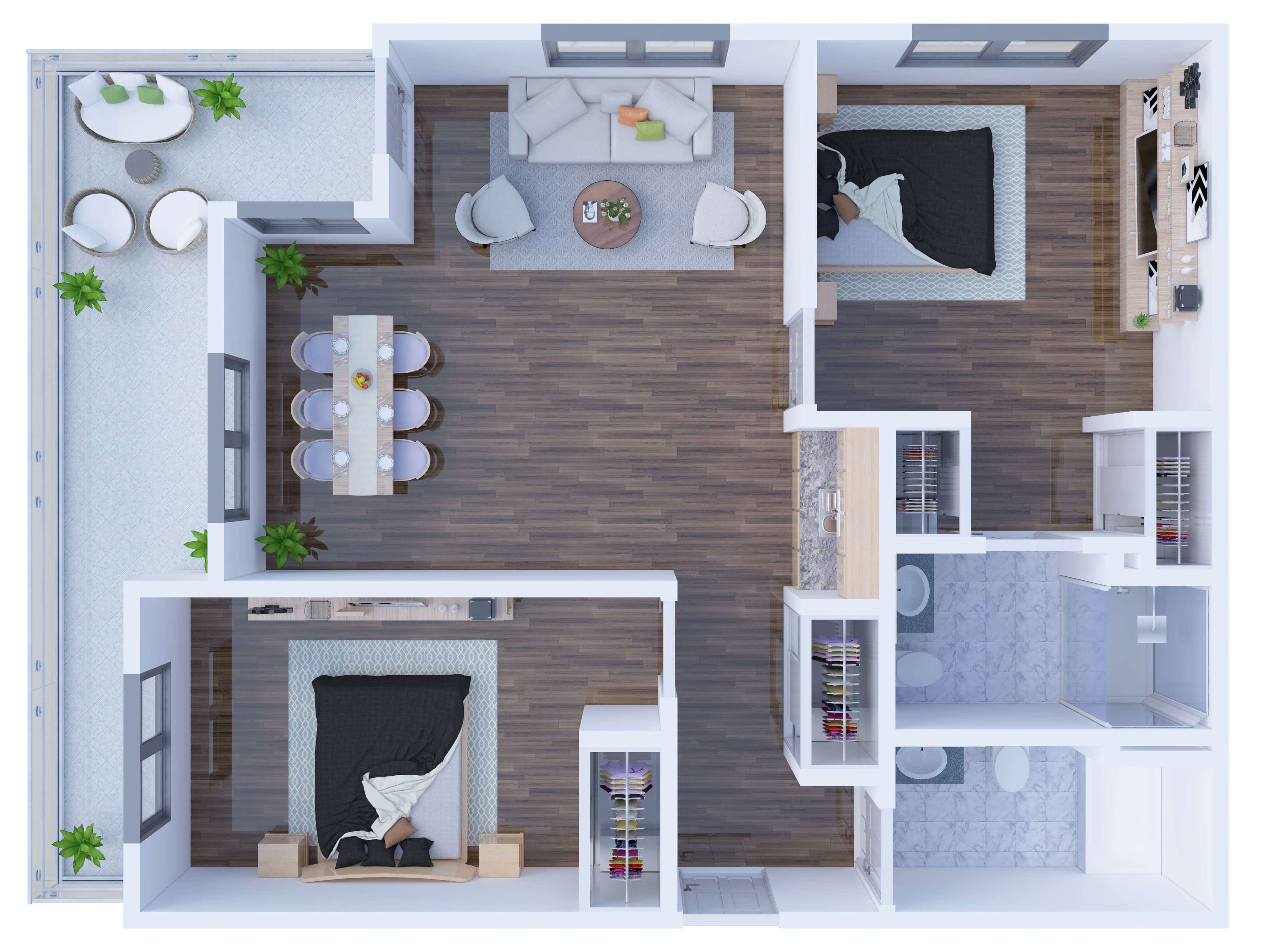Dream Home Design Plans with 3D Renderings
Building your dream home is a significant undertaking, filled with excitement and meticulous planning. One of the most crucial aspects of this process is visualizing your vision before construction begins. This is where dream home design plans with 3D renderings become invaluable. They bridge the gap between abstract ideas and tangible reality, allowing you to experience your future home before a single brick is laid. This comprehensive guide will explore the benefits and intricacies of utilizing 3D renderings in the dream home design process.

Understanding the Power of 3D Renderings in Home Design
3D renderings are sophisticated digital visualizations that transform your architectural plans into photorealistic images and even interactive walkthroughs. Unlike traditional blueprints, which are primarily functional diagrams, 3D renderings offer a visually immersive experience. They allow you to explore the spatial relationships within your future home, assess the aesthetic appeal of various design choices, and identify potential issues early in the design phase. This preemptive problem-solving saves time, money, and frustration during the construction process. The level of detail in a 3D rendering can be incredibly high, encompassing everything from the texture of the flooring to the style of the lighting fixtures, creating a highly realistic representation of your dream home. They are not just aesthetically pleasing; they are powerful tools for communication and collaboration between designers, builders, and homeowners.
)
The Design Process: From Initial Concepts to 3D Models
The journey to creating compelling dream home design plans with 3D renderings involves several key steps. It begins with the initial consultation, where you articulate your vision, preferences, and lifestyle needs to your architect or designer. This involves discussions about the desired size, layout, number of rooms, and overall architectural style. Detailed measurements of the plot are crucial at this stage. Once a conceptual framework is established, the designer begins creating 2D floor plans. These plans serve as the foundation upon which the 3D model is built. The 2D plans outline the spatial arrangement of rooms, their dimensions, and the placement of doors and windows. These plans are then translated into a 3D model using specialized software. This software allows for the manipulation of various elements, enabling the designer to experiment with different materials, finishes, and design features. Throughout this process, regular feedback sessions with the homeowner are essential to ensure the 3D rendering accurately reflects their vision.

Exploring Different 3D Rendering Styles and Techniques
The field of 3D rendering offers a range of styles and techniques, each with its own advantages and disadvantages. Photorealistic renderings aim to create images that are indistinguishable from photographs, offering a highly accurate representation of the final product. Architectural renderings focus on showcasing the structural elements and design features of the building. These are often more stylized and less focused on minute details. Interior renderings concentrate on the internal spaces, furniture, and décor, providing a detailed visualization of the home's living areas. The choice of style often depends on the specific goals of the rendering and the client's preferences. Advanced techniques, such as virtual reality (VR) walkthroughs, allow for an even more immersive experience, letting clients virtually "walk through" their future home before construction begins. These walkthroughs can be incredibly helpful in identifying potential design flaws or areas needing improvement.

The Benefits of Utilizing 3D Renderings in Home Construction
The advantages of incorporating 3D renderings into your dream home design process are numerous. Firstly, they facilitate clear communication and understanding between all parties involved. Visual representations eliminate ambiguity and misunderstandings that can arise from relying solely on 2D plans. Secondly, they allow for early detection and correction of design flaws. By visualizing the space in three dimensions, potential problems with layout, flow, or proportions can be identified and addressed before construction commences, saving time and resources. Thirdly, 3D renderings aid in making informed decisions about materials and finishes. Clients can experiment with different options virtually, seeing how they look and feel in the context of the overall design. Fourthly, they provide a powerful marketing tool for builders and architects, showcasing their skills and the potential of their designs to prospective clients. Finally, they allow for a more personalized and engaging design process, enhancing client satisfaction and fostering a collaborative relationship between the homeowner and the design team.

Choosing the Right 3D Rendering Service Provider
Selecting a reputable 3D rendering service provider is crucial for achieving the desired results. Consider their experience, portfolio, and the software they utilize. A provider with a strong track record and a diverse portfolio will demonstrate their capabilities and expertise. The software used should be capable of producing high-quality, detailed renderings. Look for providers who offer clear communication, responsive customer service, and a collaborative approach to the design process. Obtain multiple quotes and compare the pricing structures, ensuring the cost aligns with your budget and the scope of the project. Don't hesitate to ask for references and review past projects to assess the quality of their work and their ability to understand and translate your vision into a compelling 3D rendering.

Dream Home Design Plans with 3D Renderings
The integration of 3D renderings into the dream home design process represents a significant advancement in architectural visualization. It transforms the often abstract and complex process of home building into a more accessible, engaging, and collaborative experience. By leveraging the power of 3D renderings, homeowners can confidently visualize their dream home before construction, ensuring the final product aligns perfectly with their vision and expectations. The ability to explore different design options, identify potential problems early, and make informed decisions throughout the process makes dream home design plans with 3D renderings an indispensable tool for anyone embarking on this exciting journey. The enhanced communication and collaboration facilitated by these renderings ultimately lead to a smoother, more efficient, and more satisfying home-building experience.